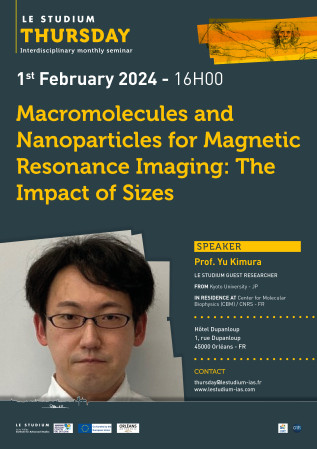Macromolecules and Nanoparticles for Magnetic Resonance Imaging: The Impact of Sizes
Hôtel Dupanloup
1, rue Dupanloup
45000 Orléans
France
Presentation
Currently, various imaging modalities for biological tissue have been used widely in clinics to find and diagnose diseases, and to follow-up the treatments. Among them, Magnetic Resonance Imaging (MRI) is a modality to visualize the amount and state of protons in the body by utilizing the nuclear magnetic resonance (NMR) of water and fat protons, and is known as a minimally invasive and safe method with excellent spatial resolution. For the observation of MRI, administration of paramagnetic chelates such as gadolinium Gd–DTPA or Gd–HP–DO3A is usually required for the enhancement of image contrast.
Although several chelate-based Gd–MRI contrast agents with low–molecular–weight have been used clinically, these contrast agents are unsuitable for tissue imaging like tumors, since they have a low vascular retention time and are rapidly eliminated. Therefore, macromolecular contrast agents, which are in high–molecular–weight have been developed. In addition, nanoparticulate gadolinium materials have been also investigated, recently. These materials could easily control the size at intravascular environment and provide crucial effects to the body distribution and even the contrast enhancement abilities. In this context, some of our studies and collaboration with Centre de Biophysique Moléculaire (CBM) will be introduced.
Speaker
LE STUDIUM Guest Researcher
FROM: Kyoto University - JP
IN RESIDENCE AT: Center for Molecular Biophysics (CBM) / CNRS - FR





